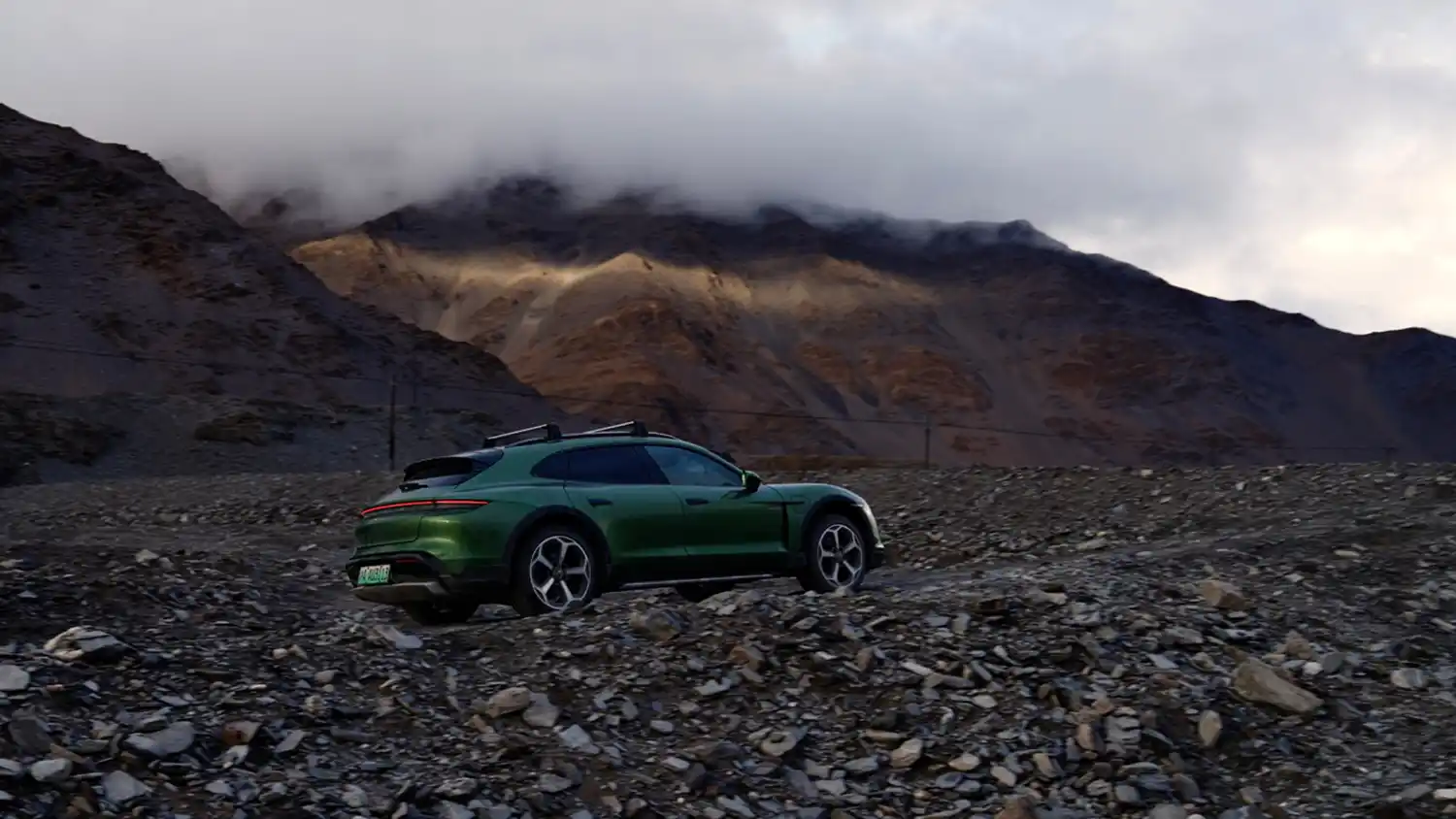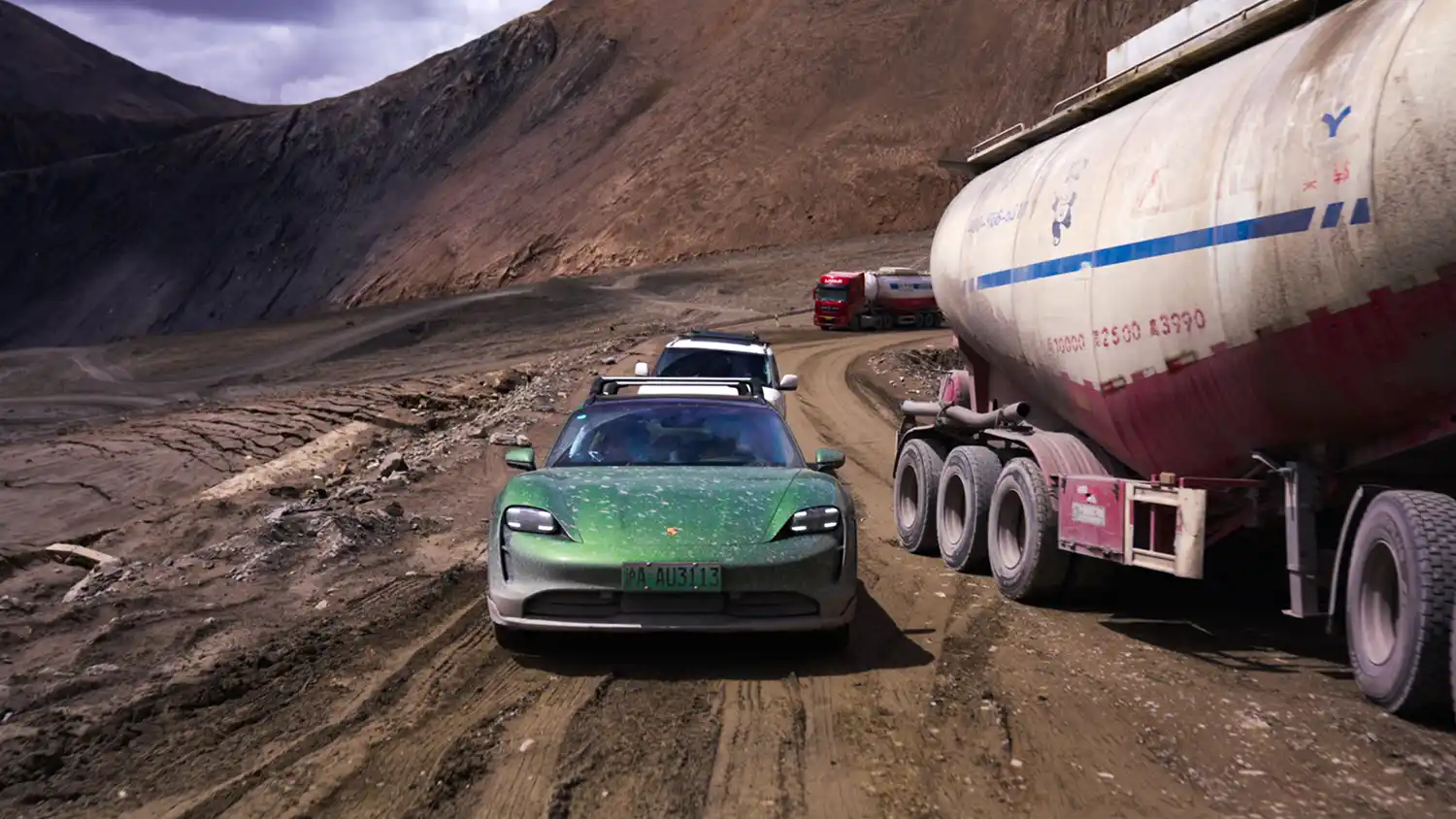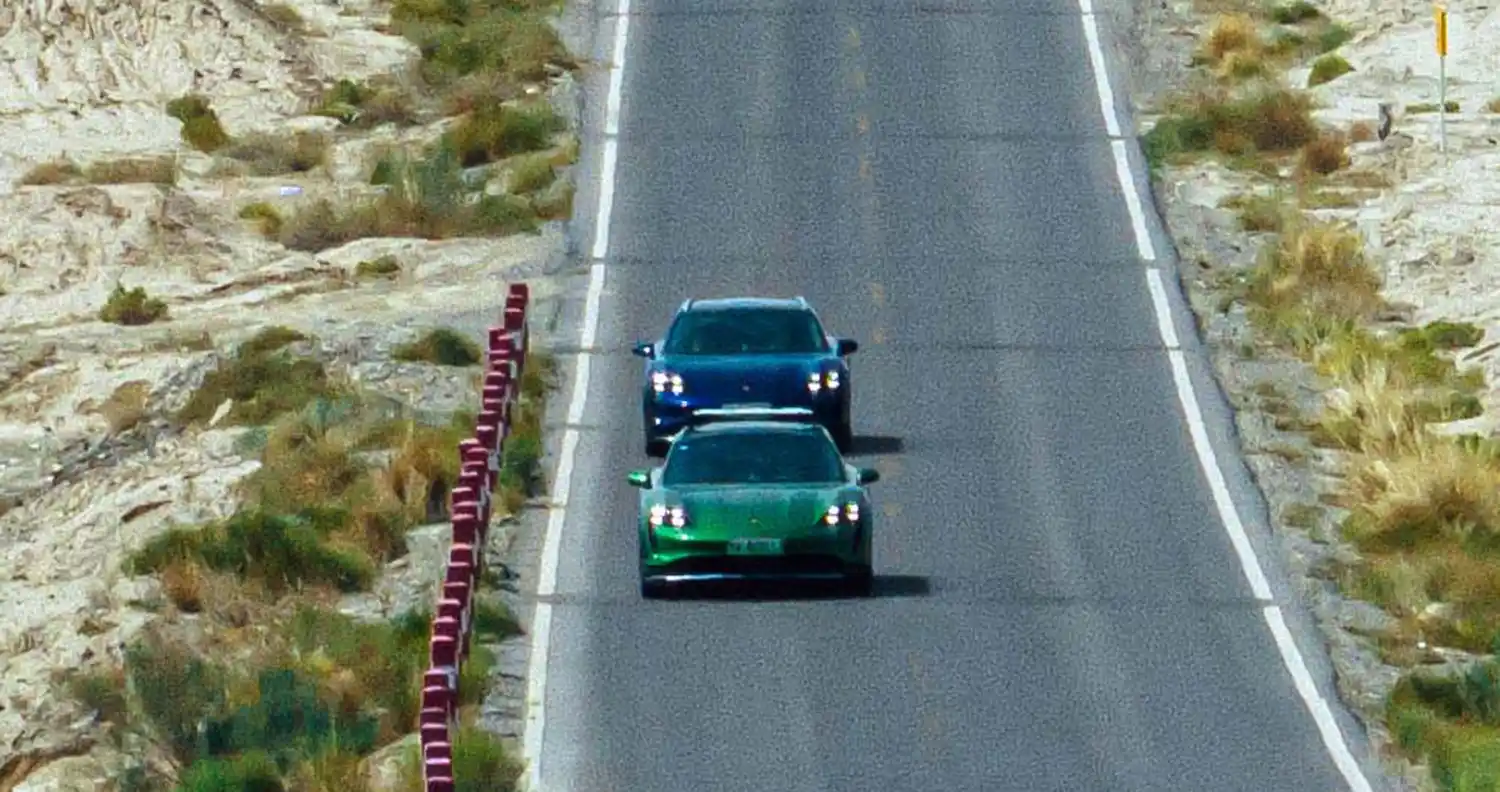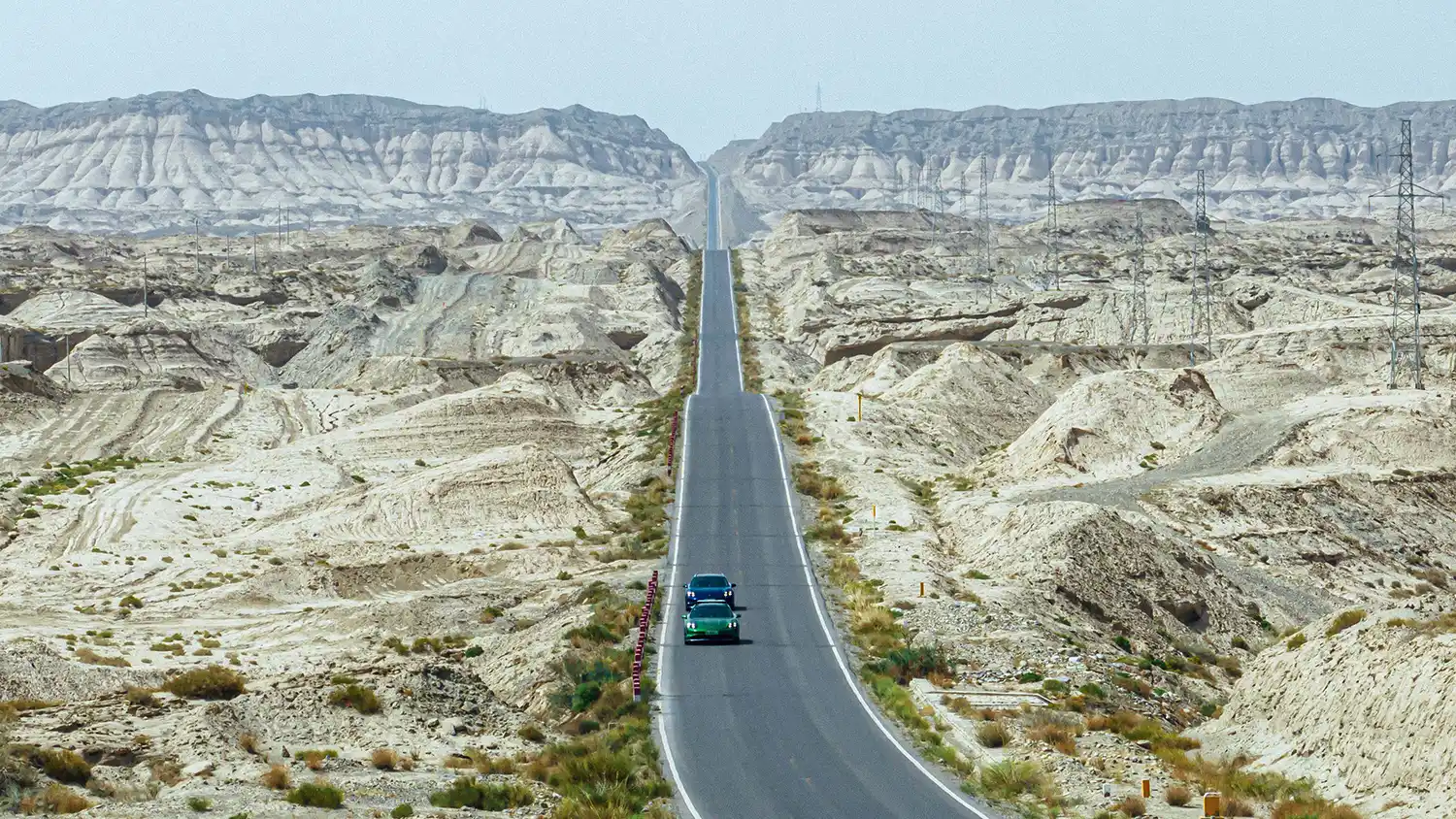
The Porsche Taycan has secured a new Guinness World Record after completing an extreme, 2,783-kilometre journey that saw it go from the lowest natural point in China to the top of one of the world’s highest national highways. The 10-day challenge began at Ayding Lake, at an altitude of minus 218.845 metres, and ended with the successful summiting of Hongtu Daban, at 5,355.134 metres above sea level.
The Xinjiang-Tibet route features desolate regions that challenge the very limits of survival, with extreme weather combining with complex and changing terrain and road conditions. With many predictable – and unpredictable – risks along the way, this spectacular road trip fully demonstrated the Taycan Cross Turismo’s off-road capabilities, long-distance comfort and solid reliability. The charging efficiency of Porsche’s 800 V architecture also proved itself in the most punishing conditions.

More than just an extreme challenge, one of the aims of the epic electric adventure was to inspire drivers to think about “better road trips” – more immersive experiences, more untamed wildness, more memories and zero-emission-driving. It was also an opportunity to show how the possibilities for sustainable travel and sports car ownership will be amplified as the world moves to an ever more electrified and sustainable future.
An extreme elevation: off-road capabilities to create more memories per journey
The record-breaking altitude change of 5,573.979 m brought with it dramatic changes in temperature, air pressure, geological conditions and other surprises from the natural world. Thanks to their terrific adaptability, the two Taycan 4 Cross Turismo sports cars that set out on the journey were able to meet each challenge head-on. From surface temperatures of 70°C to frozen, icy roads; from busy cities to a 5,000-metre-high no-man’s land; this unforgettable trip provided the team with one unique experience after another.
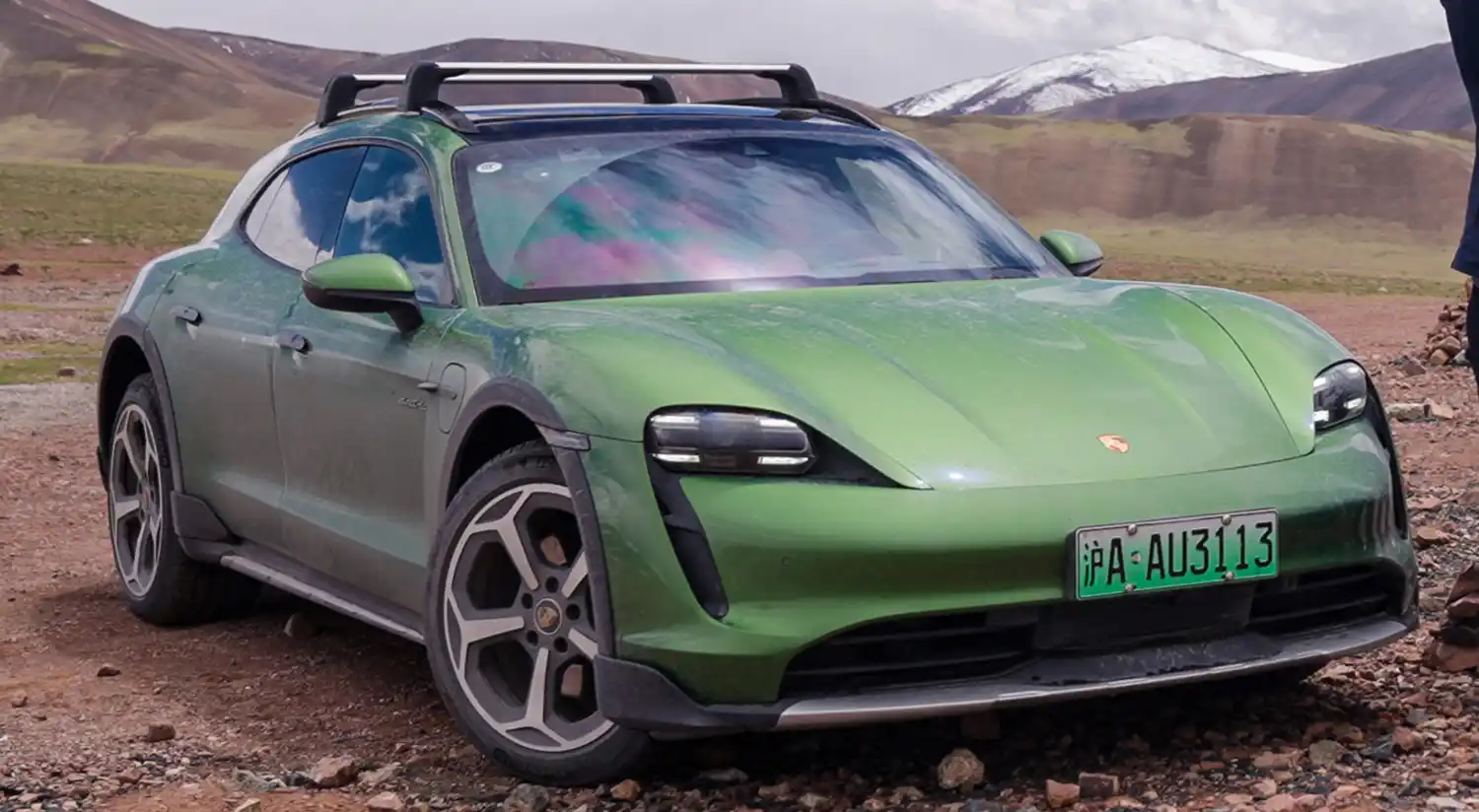
The route’s roadmap itself was a collection of placenames that have captured the hearts of countless off-road driving enthusiasts: the Tomur Grand Canyon, Tarim Poplar Forest, Sansha Desert Highway, Dukou-Lunque Highway and the G219 National Highway, as well as many more obscure, treacherous dirt and gravel roads that were littered with potholes. The cars’ chassis systems and power units responded quickly and smoothly, enabling the two Taycan Cross Turismo to not only get by, but get by steadily, with Gravel Mode waiting in the wings to show off its skills among the swirling sand and skittering stones.
Energy management for more confidence per kilometre
On long journeys, a realistic range value on the display is worth more than a figure that’s simply high. This proved especially true on the plateau, where the weather can change in the blink of an eye. The cars travelled through all four seasons of the year in 10 days. Real-time monitoring of the factors affecting internal and external power consumption provided a practical basis for the team to plan ahead and move on to the next charging point with confidence.
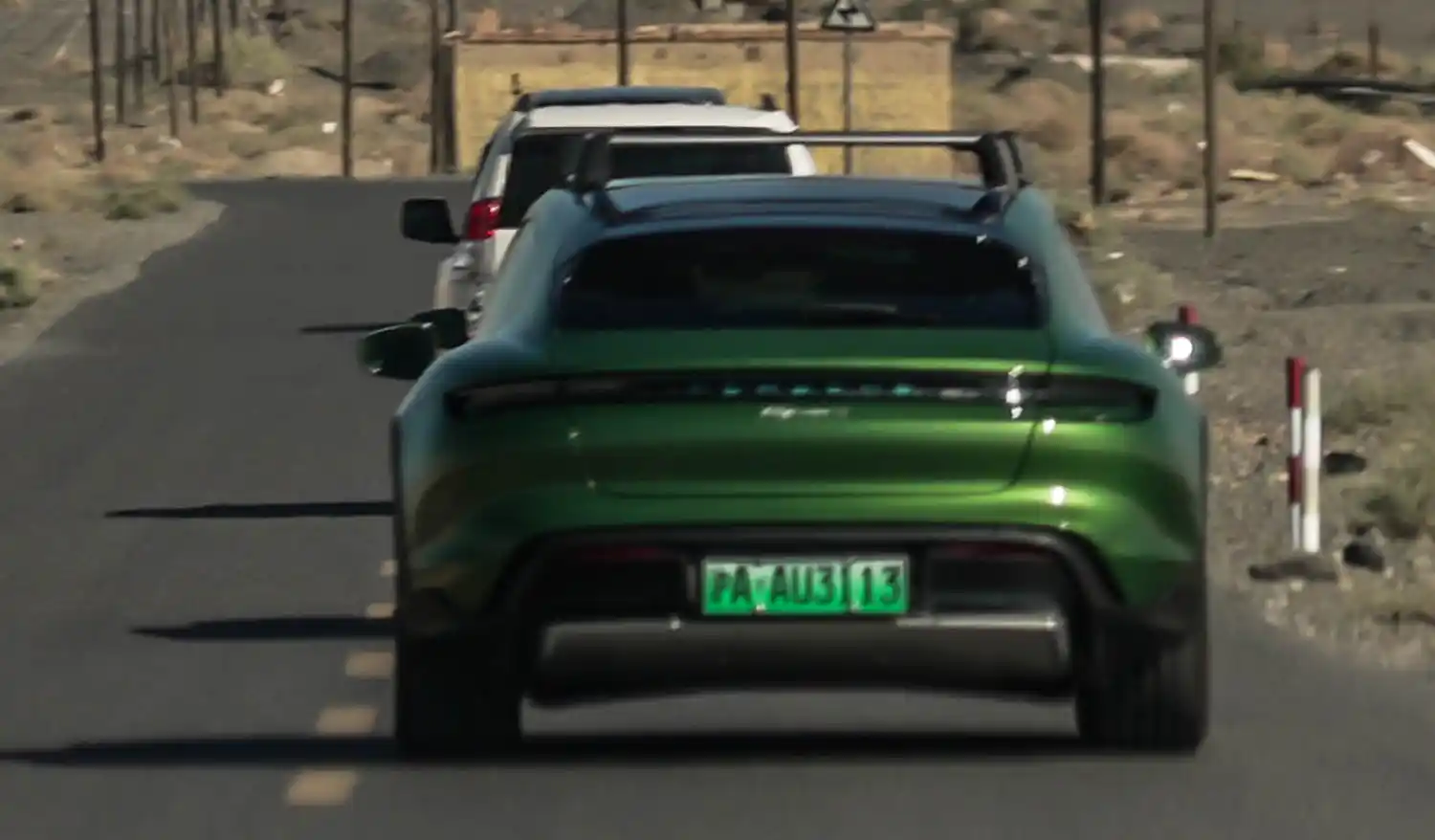
One of the reasons the G219 highway is so intimidating is its energy-sapping, hilly terrain. Here, the two-speed transmission shone through, ensuring the motor in the Taycan Cross Turismo remained in an efficient operating range whether overtaking or driving continuously at high speeds, resulting in a positive impact on energy consumption. Even more surprisingly, when the challenge team drove the cars over a pass with an altitude of more than 4,000 m, the range gradually increased, as the energy recuperation – of up to 275 kW – came into play on the long descent, helping the vehicles to go further.
Ingredients for success: thermal management and chassis tuning
The Xinjiang-Tibet route not only presents geographical challenges, but also a less than ideal charging environment. The various DC and AC charging points along the way vary from 120 kW to 22 kW. With Porsche’s proven 800 V architecture, the Taycan Cross Turismo was able to charge at the upper limit of the power output of these charging points and operate efficiently during the so-called trickle charge time at a later stage, reducing the overall charging time.

In the Kunlun and Tianshan mountains is a 760-km stretch of no-man’s land, which the cars crossed in four days, powered by the smart energy management system EnjoyElec, a start-up in which Porsche Ventures has strategically invested. As well as encountering sudden rain and unexpected snow, the cars tackled four consecutive peaks with an altitude of more than 4,900 metres. But even in such tough conditions, the intelligent thermal management system ensured the optimum operating temperature of the vehicle’s components and enabled the Taycan to remain at a high level of charging efficiency.
Adventure and comfort are not mutually exclusive
As with any big adventure, the focus wasn’t simply on the finish line, but everything the team might encounter along the way. While the vast, boundless Gobi Desert, majestic snow-capped mountains, lush poplar forests, vibrant wetlands and the unique Yadan and Danxia landforms provided the photo opportunities, this was a journey that was about much more than Instagram moments.
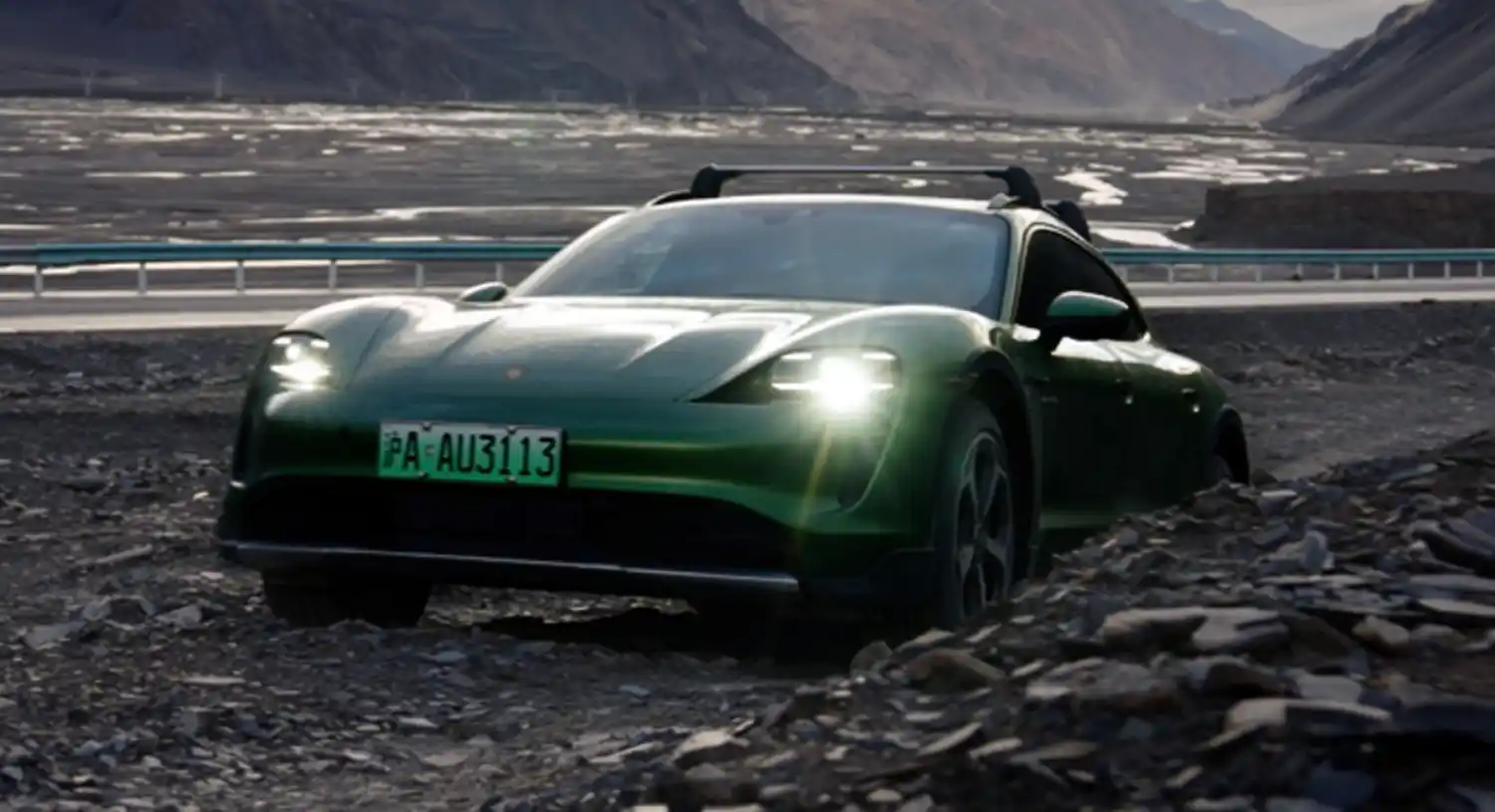
In hot sand, wind and rain, and when road conditions were at their worst, the Taycan Cross Turismo proved to be a trustworthy travel companion that could cope with the fatigue of long distances. While its high-tech chassis with all-wheel drive and Adaptive Air Suspension swiftly filtered out the literal bumps in the road, the metaphorical ones were offset by an endless stream of sensory experiences – sights, sounds, smells, tastes and tactile sensations unique to this part of the world. Indeed, never has such an altitude change been more about the highs and lows.






